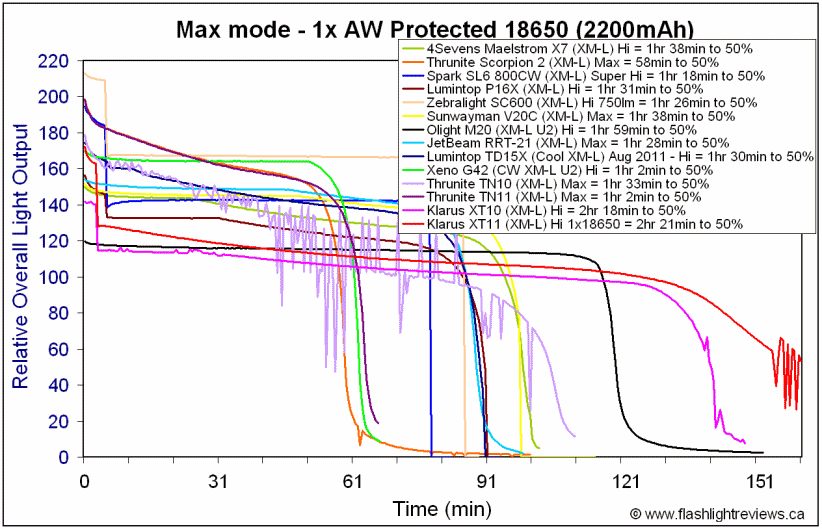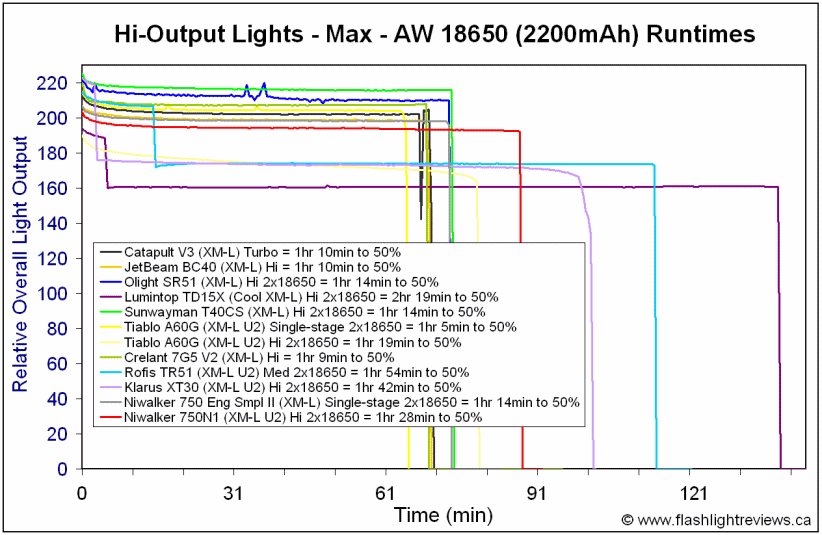FourBin Labs
Newly Enlightened
Hi, I'm new to the forum. candlepowerforums has been my "go to" for a long time when researching flashlights. I originally found CPF when researching headlight options for my pickup and have been lurking ever since.
Anyway, I'll jump to the question.
I own a Klarus ST 11, which I think is great general purpose light for most everything, but I am looking for options for distance applications. I started browsing Klarus's website to see what options they had for distance applications, and came across this conundrum. Here are 3 flashlights I was comparing
ST11:
Battery: 1x 18650
Lumens: 900
Candela: 7817 cd
Runtime: 2.3 Hrs
XT11:
Battery: 1x 18650
Lumens: 820
Candela: 8217 cd
Runtime: 3 Hrs
XT30:
Battery: 2x 18650
Lumens: 820
Candela: 29000 cd
Runtime: 1.8 Hrs
All of these lights use the CREE XM-L2 emitter. The XT11 & XT30 us the U2 LED, and I do not see if the ST11 also uses a U2 or not.
If I understand, lumen & candela measurement correctly, lumen output is total light output, and cadela is peak beam intensity. It seems that power consumption should be directly related to lumen output on any particular LED. The ST11 with 900 lumens last for 2.3 hours. Now the XT11 making 820 lumens goes up to 3 hours of run time. This makes sense in my understanding. What confuses me, is how can the XT30 with the same lumen output as the XT11 (820) only last for 1.8 hours. With not one 18650 battery like it's counterpart, but 2 18650 batteries.
Is there something going on here that I am missing , or is this a typo? How can this flashlight consume so much more power with the same LED and light output?
Anyway, I'll jump to the question.
I own a Klarus ST 11, which I think is great general purpose light for most everything, but I am looking for options for distance applications. I started browsing Klarus's website to see what options they had for distance applications, and came across this conundrum. Here are 3 flashlights I was comparing
ST11:
Battery: 1x 18650
Lumens: 900
Candela: 7817 cd
Runtime: 2.3 Hrs
XT11:
Battery: 1x 18650
Lumens: 820
Candela: 8217 cd
Runtime: 3 Hrs
XT30:
Battery: 2x 18650
Lumens: 820
Candela: 29000 cd
Runtime: 1.8 Hrs
All of these lights use the CREE XM-L2 emitter. The XT11 & XT30 us the U2 LED, and I do not see if the ST11 also uses a U2 or not.
If I understand, lumen & candela measurement correctly, lumen output is total light output, and cadela is peak beam intensity. It seems that power consumption should be directly related to lumen output on any particular LED. The ST11 with 900 lumens last for 2.3 hours. Now the XT11 making 820 lumens goes up to 3 hours of run time. This makes sense in my understanding. What confuses me, is how can the XT30 with the same lumen output as the XT11 (820) only last for 1.8 hours. With not one 18650 battery like it's counterpart, but 2 18650 batteries.
Is there something going on here that I am missing , or is this a typo? How can this flashlight consume so much more power with the same LED and light output?



